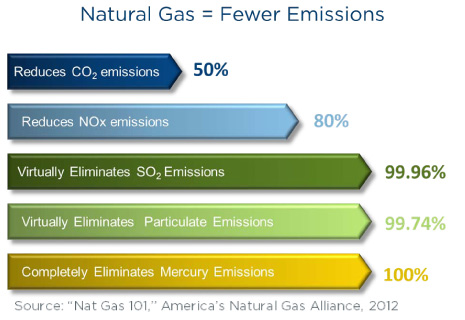By Douglas C. Sandridge, EnergyPolicyUs.org
March 4, 2015
Part 4 of 5 – COAL-CYCLING DILEMMA (Wind’s other Achilles Heel) & THE SUPPORTING ROLE OF NATURAL GAS
Based on the information outlined in Part 3 of this series, even the most fervent advocates of wind energy are destined to conclude that wind generated electricity cannot reliably supply 100 percent of the electricity required in the United States. Consequently, enlightened wind advocates must also conclude that wind generated electricity can only be effectively deployed when there is a reliable backup source of energy to generate electricity when wind cannot. Photovoltaic solar power is not an effective backup source for electrical generation due to its own inherent reliability issues. Using coal to back-up wind is also not a very effective due to a phenomenon sometimes referred to as “coal-cycling.”
Electricity must be produced and consumed contemporaneously. In other words, there is not currently a cost effective method for storing electricity on a large scale like crude oil, natural gas, coal, plutonium or water (for hydro-electricity). Therefore, the supply of electricity must always match demand on the electrical grid. As system demand for electricity constantly fluctuates, electric utilities must continuously adjust the production of electricity to match concurrent demand. When electricity generation increases from wind farms, electric utilities most commonly will choose to use the wind generated electricity in preference to other energy sources like natural gas, nuclear and coal. Typically, this choice is due to (i) contractual obligations to purchase wind generated electricity; and/or (ii) the utility companies’ needs and/or desires to use as much renewable energy as possible (in order to comply with Renewable Portfolio Standards). Accordingly, when wind generated electricity increases, electric utilities must curtail the generation of electricity from other sources (natural gas, nuclear, coal, etc.). Conversely, when the wind power subsides, the utilities must instantaneously increase the generation of electricity from other sources in order to continuously match supply and demand and insure reliable delivery of electricity to their customers. This drama transpires relentlessly in the control rooms of electric utilities across the country 24 hours a day, 365 days a year.
Utilizing coal can be quite effective in generating electricity when used in a steady state (as base load), similar to how diesel trucks run efficiently at a steady highway speed. However, diesel trucks perform far less efficiently in “stop-and-go” traffic. Likewise, coal-fired power plants do not perform efficiently in a volatile “stop-and-go” manner in order to accommodate the fluctuations in wind power. Frequently turning on and off coal-fired power plants and/or “ramping-up” and “ramping-down” such power plants to change electricity output (“coal-cycling”), can be very damaging to the equipment and expensive. Perhaps more significantly, every time that a coal-fired plant has to be ramped-up or ramped-down to adjust for variances in wind capacity, a spike in emissions results. The magnitude of the emission spikes resulting from coal-cycling depends on a plethora of factors. According to a recent study in Colorado, the emission spikes resulting from coal-cycling can be greater than the emission reductions created by the wind farms. In other words, when coal is used as a back-up for wind (as opposed to using coal as a base load), coal-cycling emission spikes often negate the perceived emission benefits resulting from wind generated electricity. Understandably, electric utilities have concluded that due to increased emissions resulting from coal-cycling, coal is not effective to use as a swing resource to generate electricity as a back-up for wind and other types of renewable energy.
REPLACING COAL WITH NATURAL GAS TO GENERATE ELECTRICITY

Source: America’s Natural Gas Alliance
Electric utilities have discovered that using natural gas is a simple, safe and cost effective solution to the coal-cycling dilemma. Natural gas can be easily ramped-up and ramped-down to support the use of wind without the unintended emission spikes and other consequences of coal-cycling. According to a recent report by the University of Colorado, replacing coal with natural gas in a conventional electrical generation applications, reduces CO2 emissions by 40-53 percent. Using natural gas instead of coal as a back-up for wind (thus eliminating coal-cycling emissions) would result in an even greater reduction of CO2 and other emissions. Many electric utilities already use natural gas as their principle back-up for wind generated electricity. Using natural gas as the primary backup source for electricity generation (i) is critical for the cost-effective and environmentally prudent use of wind and other types of renewable energy; and (ii) remains essential to facilitate further growth of renewable energy for electricity generation.


